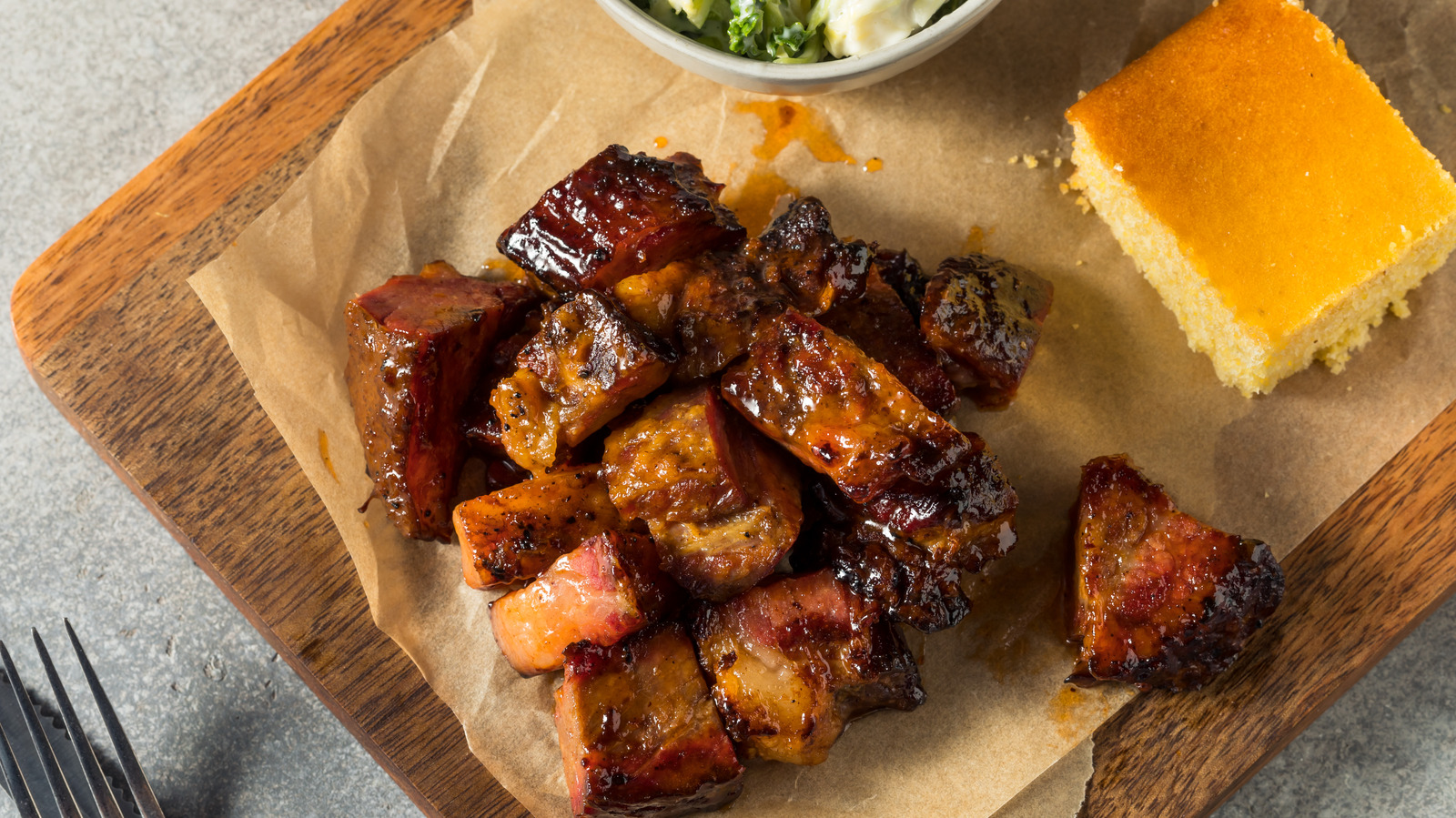
"The classic cut of beef for burnt ends is the "point" of a brisket. This is the thicker, fattier end. The other part of the brisket is known as the flat."
"Fat is equal to flavor, an especially fatty hunk of meat will result in the richest tasting burnt ends. The point is also full of connective tissues and collagen that gelatinize during the low and slow cooking process."
"You could also use a chuck roast, which is commonly known as poor man's burnt ends. While it is a less traditional option, chuck roast is cheaper than cuts of brisket and cooks faster."
"For the dry rub, I always seem to go back to just salt and pepper so I can taste the meat - just make sure it's seasoned well."
Burnt ends, once considered discarded scraps before the 1950s, are now a highly desired barbecue delicacy. Typically, they are made from the "point" of a brisket, the thicker and fattier end. This cut contains a significant amount of fat, which contributes to its rich flavor and enhances the melt-in-your-mouth texture during cooking. Alternative cuts, such as chuck roast, can also be used, often referred to as poor man's burnt ends due to their affordability. Basic seasonings like salt and pepper are recommended to enhance the meat's natural taste.
Read at Tasting Table
Unable to calculate read time
Collection
[
|
...
]